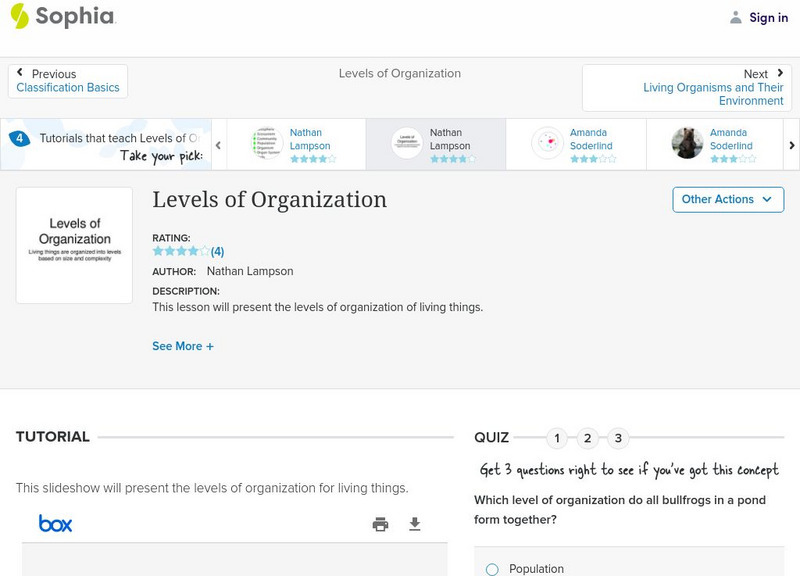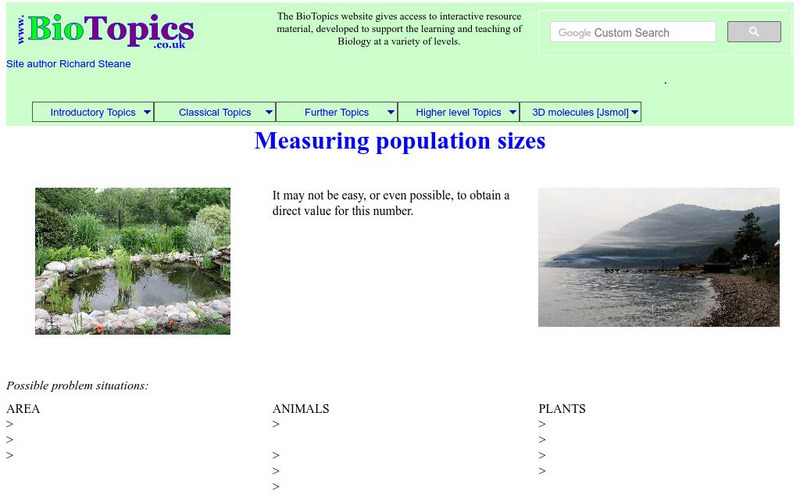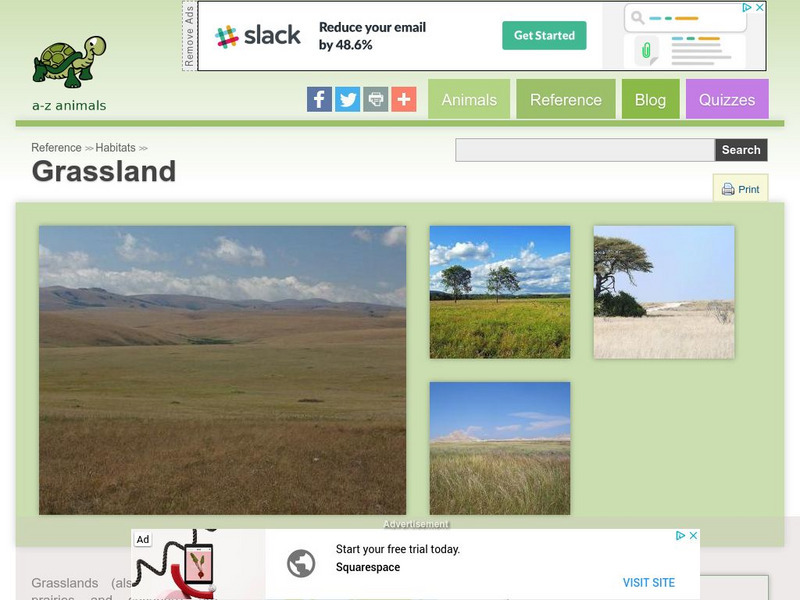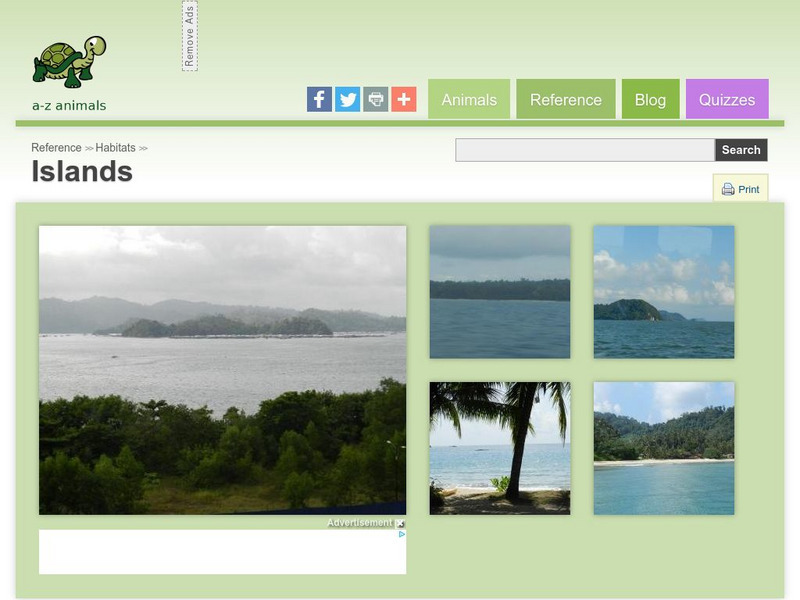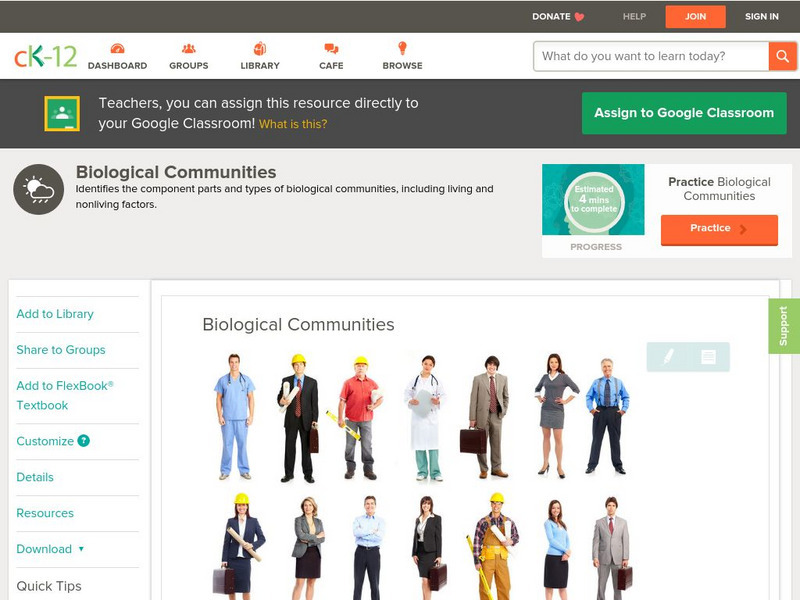Scholastic
Scholastic: Study Jams! Science: Ecosystems: Changes in Ecosystems
A video and a short multiple-choice quiz on the natural changes that take place in an ecosystem, and the negative impact humans can have on ecosystems.
Scholastic
Scholastic: Study Jams! Science: Ecosystems
A video and a short multiple-choice quiz on the topic of ecosystems, covering biotic and abiotic factors, and the roles organisms play in an ecosystem.
US Environmental Protection Agency
Epa: Surf Your Watershed
This resource provides information on watersheds, maps, activities, and links to local watershed information.
Scholastic
Scholastic: Study Jams! Science: Ecosystems: Food Webs
A video and a short multiple-choice quiz on food webs that explains the difference between food webs and food chains, and the relationships that exist between organisms.
Cynthia J. O'Hora
Mrs. O's House: Habitat Project Digital Science Journal
Develop a digital story to illustrate and inform others about different habitats or ecosystems. Resources for building a digital story are provided.
Sophia Learning
Sophia: Levels of Organization: Lesson 4
This lesson will present the levels of organization of living things. It is 4 of 6 in the series titled "Levels of Organization."
Bio Topics
Bio Topics: Food Chains and Webs
Trace the energy transfer through food chains and food webs. Check your understanding by hovering your mouse over questions to reveal the answers.
Bio Topics
Bio Topics: Measuring Population Sizes
Read and understand the concept of ecological population counts and sizes. Hover the mouse over questions to reveal the answers as you sharpen your skills.
Other
Western North Carolina Vitality Index: Ecosystem Threats
The forests of Western North Carolina are threatened by a wide variety of environmental stressors and disturbances, such as insects, disease, invasive species, drought, fire, hurricanes, tornadoes, and ice storms. A stressor is any kind...
Sophia Learning
Sophia: Abiotic and Biotic Factors: Lesson 2
This lesson will introduce abiotic and biotic factors, giving examples and comparing/contrasting the two. It is 2 of 4 in the series titled "Abiotic and Biotic Factors."
NASA
Nasa: Climate Kids: Make a Terrarium Mini Garden
Want to be a little more Earth friendly? Try making one of these terrariums by following the steps provided.
A-Z Animals
A Z Animals: Reference: Habitats: Freshwater
Learn about the plants, animals, and other characteristics of some freshwater ecosystems.
A-Z Animals
A Z Animals: Reference: Habitats: Grassland
Find out about the plant and animal interactions within the grassland ecosystem.
A-Z Animals
A Z Animals: Reference: Habitats: Islands
Learn about the island ecosystem, and how its geography affects the life on it.
A-Z Animals
A Z Animals: Reference: Habitats: Mountains
Find out about the plant and animal life in different types of mountain habitats.
American Geosciences Institute
American Geosciences Institute: Earth Science Week: Mystery Mollusc
Students become marine biologists, and their goal is to characterize the biological communities that live on or near the seamount in the Monterey Bay area. There, they must identify a mystery mollusk.
American Geosciences Institute
American Geosciences Institute: Earth Science Week: Sea Level and the Terrapin
Students build a model ecosystem to simulate the life and limiting factors of the Terrapin turtle.
University of Utah
University of Utah: Genetic Science Learning Center: Meet the Microenvironments
Investigate the Great Salt Lake's islands, rivers, and man-made structures that define several diverse microenvironments.
TeachEngineering
Teach Engineering: Environments and Ecosystems
Learners explore the biosphere and its associated environments and ecosystems in the context of creating a model ecosystem, learning along the way about the animals and resources. Students investigate different types of ecosystems, learn...
CK-12 Foundation
Ck 12: Earth Science: Biological Communities
[Free Registration/Login may be required to access all resource tools.] Provides an overview of biological communities.
Cornell Lab of Ornithology
Habitat Network: Wildlife Habitat Category in the Groups Data Visualization
Habitat Network has combined all the vegetatively-complex habitat polygons into categories here.
Other
Trees for Life
A Scottish conservation charity dedicated to the regeneration and restoration of the Caledonian Forest in the Highlands of Scotland.
Read Works
Read Works: All the Pieces Matter
[Free Registration/Login Required] This passage shares a classroom discussion about interpendence of living things, including people, in an ecosystem. This passage discusses This passage is a stand-alone curricular piece that reinforces...
Read Works
Read Works: The Meadowlands
[Free Registration/Login Required] A literary text about a girl who learns to see both the disgusting and the beautiful parts of wetlands. A question sheet is available to help students build skills in reading comprehension.





